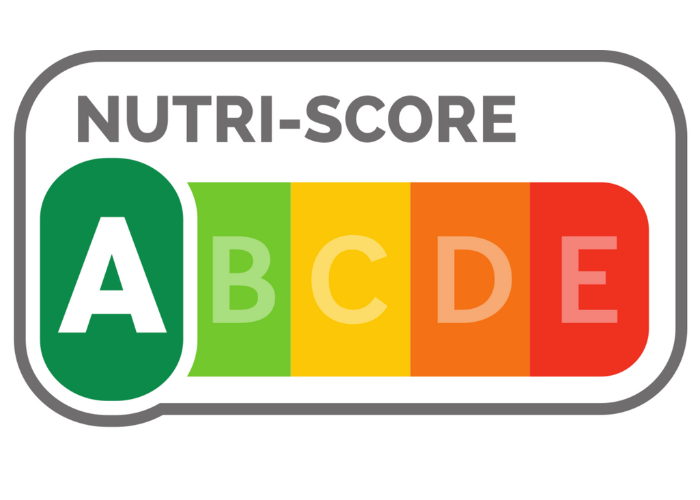Changes to Nutriscore: risks for consumers and the marketBY ANTONIO PICASSO
- 16 January 2024
- Posted by: Competere
- Category: Senza categoria

The Nutriscore is a topic that never ceases to be discussed, especially among industry professionals. The rationale for this is its vulnerability, both as a valuable information tool for consumers based on debatable scientific data and as a labeling system that some interest groups would like to see mandatory for all food products sold in Europe.
WHAT IS NUTRISCORE
For explanatory purposes, let’s briefly summarize what Nutriscore entails. It is a traffic light label that, based on an algorithm, naturally adapts as it gathers information to calculate nutritional information per 100g of food and 100ml of beverages. It assigns a classification ranging from A-green, indicating low energy, sugar, saturated fat, and sodium content, to E-red, signaling potential health risks.
Algorithms, by nature, adapt as they acquire information. In the scientific approach, there is always the possibility that a previously deemed valid thesis may be refuted later. However, the empirical nature of knowledge allows for proving what was once believed to be correct as incorrect. Nevertheless, ethical concerns arise when considering the real-life consequences of refuting a scientific postulate outside a laboratory.
To put it plainly, let’s draw a comparison with the legal field. Law is not an exact science, and its ramifications can have dramatic effects on an individual’s life. For example, consider a wrongful verdict issued in good faith. The life imprisonment of an innocent person, or the acquittal of a guilty one, is a grave matter.
The problem, returning to the theme of this intervention, is that until recently, Nutriscore was presented as a firm and unassailable beacon of reference in modern nutritional science. A practical method for consumers to understand what constitutes a good or bad food. Its modification introduces a relativity into science that is unacceptable, both conceptually and practically.
DOWNSIZING OF NUTRISCORE CLASSIFICATIONS: CAUSES AND CONSEQUENCES
The downgrading of many products from A to C and from C to D suggests a potentially erroneous classification until now. How is it possible that some products were deemed suitable for unlimited consumption (A-green) only to be evaluated as barely passable (C-yellow) today? On what basis was the A classification determined? It’s essential to note that we are not discussing mathematical calculations but rather chemical studies applied to nutrition. And from this perspective, on what criteria was the new C rating established? Why did no one realize before that a food previously considered healthy has now been deemed harmful?
EFFECTS OF NUTRISCORE CHANGES ON CONSUMERS
Considering these questions, consider how consumers might react. Confident in the technical-scientific contribution to purchasing products suitable for their health, they now find themselves having to forgo them because they’ve suddenly been labeled. “So, you’ve been making me eat things that are bad for me until now?” This question is entirely justified.
By assigning A-green to particularly calorie-dense products or those with high levels of “nutrients of concern“, Nutriscore has harmed consumers’ health, leading them to show inadequate restraint.
IMPACTS OF CLASSIFICATION CHANGES ON BUSINESSES
Similar confusion is conceivable in terms of the market. To meet an A-green Nutriscore, many companies have often invested in research and development. Allocating resources to consolidate a market is undoubtedly strategic. However, if they are then forced to backtrack and receive a C-yellow Nutriscore for the same recipe, rendering all efforts futile. Consider how many agrifood SMEs—even French ones—committed to defining a new identity consistent with Nutriscore.
In the business context, the paradox is even more complex. Given the implementation timelines of the new Nutriscore, there is no law prohibiting the coexistence of the same product on supermarket shelves but with different labeling. This is detrimental to consumers and, more importantly, free competition.
NUTRITION 5.0 AND THE EVOLUTION OF FOOD TECHNOLOGY
2023 will be remembered as the year of Artificial Intelligence, not because it didn’t exist before, but because it has finally broken through the barriers of technology accessible to individuals.
Until recently, advanced technology was the domain of companies—Blockchain, exoskeletons used in production processes, AI systems replacing tasks less tolerable for human labor. Daily life had only a superficial perception of all this.
Today, thanks to ChatGpt and Pins—the sophisticated devices designed to interact with AI rather than apps—the average person has the potential to make their daily life technological. Taking into account home automation devices, it becomes clear how nutrition and food become uncharted territories ready to be explored and conquered.
CONCLUSIONS
Now, what sense does a generalized and unstable algorithm make, especially one that is becoming less “trendy” among European societies, considering that most member states have expressed opposition, compared to the futuristic ability to recognize food in front of a camera to obtain real-time nutritional information tailored to the individual?
It might sound trivial, but the challenge of the future is not to surrender to technology at all costs but to leverage technology to genuinely improve our quality of life. This is why it’s called “artificial intelligence”.
Article published in Italian on Agendadigitale.eu
.
